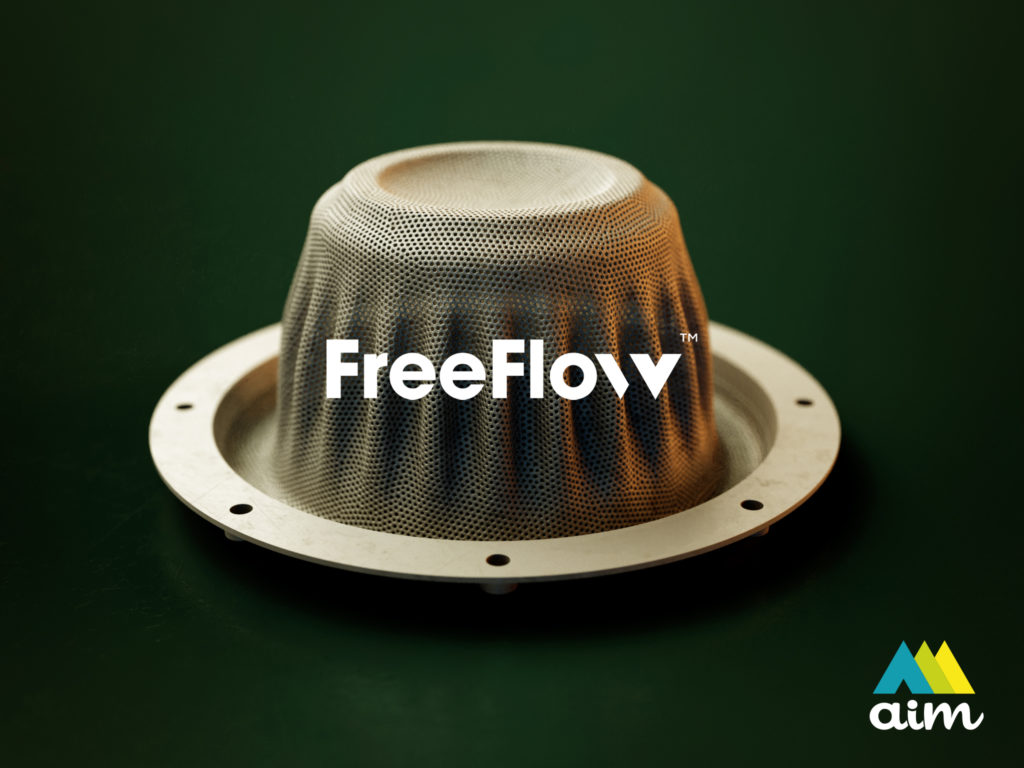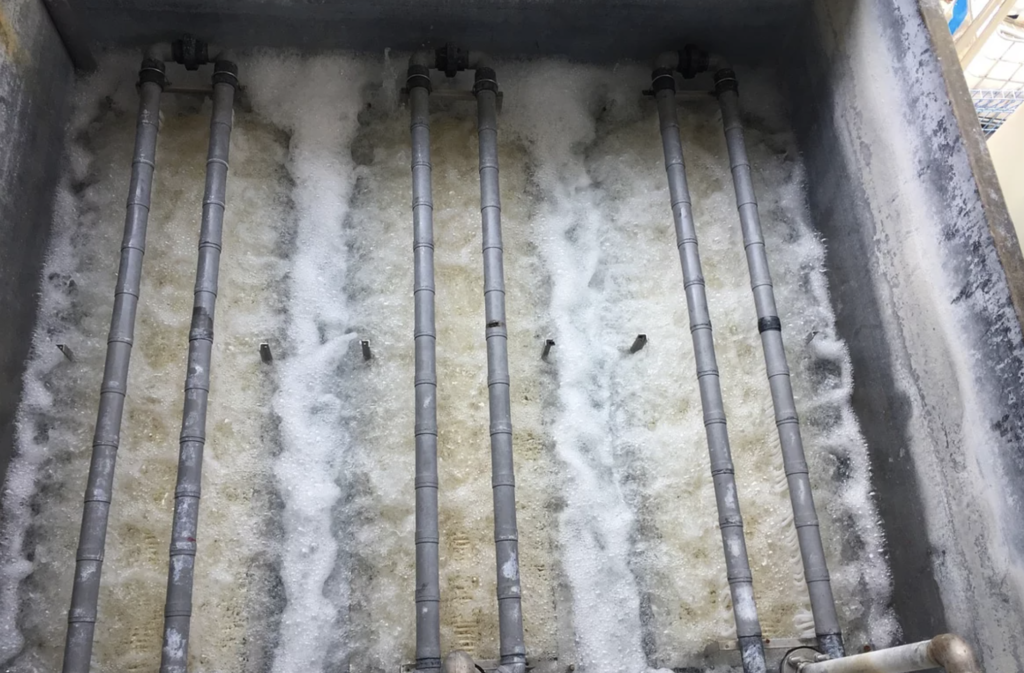As nTopology’s Duann Scott pointed out that they were seeing “a lot of interest in filtering systems.” It’s good to know that this exciting application is getting some traction. 3D printed filters, screens, meshes and filtration systems are part of a hidden application that is occurring but underutilized and under-publicized. A lot of companies are turning to additive to solve complex filtration and flow problems, but the part volume is very low. So, our industry may not really understand yet just how fruitful it will be to create filtration products using additive manufacturing (AM).
HP and AIM Sweden have just about the only well-publicized and well-understood cases of 3D printed meshes. In both their cases fiber mold tooling can be optimized through 3D printed molds that are really a combination of a series of molds and screens. These tools break down less because flow can be optimized by controlled porosity. Holes themselves are more precise and less likely to inhibit flow. This means less breakages occur and productivity is increased.

By making the tools cost effective and longer lasting the advantage of it being quick to produce is further enhanced. This is no highfalutin, super cool idea for the future. This is a tool that can be used now to make egg cartons more cheaply. If there is a new shape, a new trend, or a new development new tools can be made more rapidly. But, even if its bog-standard egg cartons, the HP and AIM tools are made to cost effectively replace the exiting tooling. This is the kind of thing that I love. With considerable understanding of a little-understood market, both of these companies have figured out how to make a 3D printed solution that works now.

I like the reality and cost effectiveness of this. We’re not talking about a heat sink for a satellite or a part of a rocket engine. This is everyday industrial stuff. Also, the customer doesn’t need to delve into design for additive manufacturing, understand AM, train their people to design, or buy a machine. They can just order these tools when they need them. To me these kinds of applications are what we need to grow the market.
Our current position is: invest $2 million and two full-time employees, take a year, and you can learn additive. This is nonsense. There are thousands of very specific, software-enabled services that can design millions of parts through simple mass customization that could be used in industrial processes. Let’s stop focusing on force-feeding industry our whole technology, but rather switch to offering specific tools to easily obtain 3D printed parts. Let them get their toes wet in minutes for thousands of dollars and then maybe they’ll buy a machine. If they don’t, we can keep selling them high-value parts. Rather than get locked into never-ending negotiations on the single-digit margin world of manufacturing, we can continue providing high-value solutions in low volumes over time.
Beyond molded fiber tooling, where else could we find fruitful applications for 3D printing? Here electrospinning and 3D printing are used to make 3D printed filters for masks. ExOne demonstrated the benefits of control over porosity in binder jetting when it 3D printed copper mask filters last year, a skill that it applies to industrial filters as well. 3D printing membranes have long been an area of interest. Croft used 3D printing to make a wide variety of filters and has made custom filters with 3D printing since 2014. These filters can be custom designed and made, sometimes in less than two days, for pharma, food and beverage, and oil and gas.
A large number of filtration systems have been made with 3D printing. Here, Korean and Indonesian researchers show us how they’ve developed a complex filter for arsenic removal. In this application we learn:
“Our proposed filter has a simple design and can easily be produced at low cost. Simple changes in the architecture of the filter had the following effects: As the channel width became narrower, corresponding to an increase in the internal surface area of the 3D printed filter, (1) more iron (III) oxide (adsorbent) was deposited on the inner surface of the filter, and (2) the flow rate under atmospheric conditions (without external pumping) decreased. The larger deposition of iron (III) oxide and the decreased flow rate led to better removal of arsenic.”
It’s a great example of how filters can be low-cost, while being high-performance due to the design freedom we have in 3D printing. This is an excellent article giving an overview of 3D printing techniques used for water filtration. Here is another focusing on water treatment, this case demonstrates the use of clay for producing filters using an Ultimaker. In another study, a rather more exotic material, graphene aerogel, was used as a water filter. The paper concluded that, “100% organic solvents over 10 cycles of regeneration and reuse” and that,
“The potential and vision of the 3D printing approach for graphene-based water treatment presented here can be extended to other functional nanomaterials, can enable shape-specific applications of fit-for-purpose adsorbents/reactors and point-of-use filters, and can materialize the large-scale manufacturing of nano-enabled water treatment devices and technologies.’

A much more commercially ready application is being explored by Singapore’s Nano Sun, which is using PVDF to make 3D printed micro filtration membranes. The company is developing containerized water filtration solutions capable of processing 500 cubic meters of water per day. The company is also doing reverse osmosis water desalination to the tune of 1440 cubic meters a day in Singapore.
As with 3D printed batteries, mass customized 3D printed heatsinks and mass customized 3D printed nozzles, I think that meshes, screens and filters are a perfect business case for mass customization and 3D printing. We can make lighter, more efficient filters specific to many applications that will outperform some existing filtration devices, in a cost effective way. To me, application-specific mass customization tools, startups, and services are the fastest ways to open up and conquer many suitable industrial applications quickly. By not focusing on machine sales but rather on delivering specific geometries for optimal applications we can unlock new markets profitably and quickly.
Subscribe to Our Email Newsletter
Stay up-to-date on all the latest news from the 3D printing industry and receive information and offers from third party vendors.
You May Also Like
3D Printing Unpeeled: New Arkema Material for HP, Saddle and Macro MEMS
A new Arkema material for MJF is said to reduce costs per part by up to 25% and have an 85% reusability ratio. HP 3D HR PA 12 S has been...
3D Printing News Briefs, January 20, 2024: FDM, LPBF, Underwater 3D Printer, Racing, & More
We’re starting off with a process certification in today’s 3D Printing News Briefs, and then moving on to research about solute trapping, laser powder bed fusion, and then moving on...
3D Printing Webinar and Event Roundup: December 3, 2023
We’ve got plenty of events and webinars coming up for you this week! Quickparts is having a Manufacturing Roadshow, America Makes is holding a Member Town Hall, Stratafest makes two...
Formnext 2023 Day Three: Slam Dunk
I’m high—high on trade show. I’ve met numerous new faces and reconnected with old friends, creating an absolutely wonderful atmosphere. The excitement is palpable over several emerging developments. The high...































